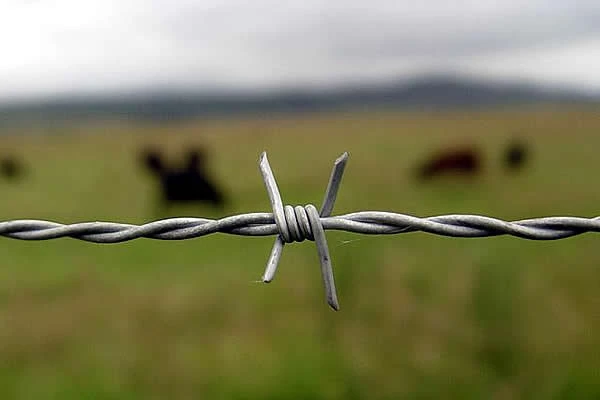 TEL:
+86-13102802206
TEL:
+86-13102802206
 Email:
fencenetting@china.com
Email:
fencenetting@china.com
 Language
Language
 TEL:
+86-13102802206
TEL:
+86-13102802206
 Email:
fencenetting@china.com
Email:
fencenetting@china.com
 Language
Language


Understanding Tension in Barbed Wire Fences
Barbed wire fences are a common sight across rural landscapes and agricultural properties. They provide an effective solution for enclosing livestock, defining property boundaries, and deterring intruders. While the utility of a barbed wire fence is well established, understanding the tension in its structure is critical for ensuring its longevity and effectiveness. This article explores the importance of tension in barbed wire fences, its impact on durability, and how to maintain proper tension levels.
The Importance of Tension
The primary purpose of barbed wire fencing is to create a barrier that is not easily breached. Tension plays a vital role in achieving this goal. When a barbed wire fence is properly tensioned, it stands upright and maintains its shape, creating a strong deterrent against animals and intruders. Insufficient tension can lead to several problems, such as drooping wire or excessive sagging, which can create gaps in the fence. These gaps can be exploited by livestock wishing to escape or by wildlife seeking entry.
Moreover, adequate tension distributes the weight of the wire evenly across the posts, minimizing the risk of bending or breaking. A well-tensioned wire resists environmental factors, such as wind, rain, and snow, which can cause weaker structures to succumb to the elements. Thus, attention to tension not only enhances security but also ensures the fence remains functional over time.
Factors Influencing Tension
Several factors influence the tension in a barbed wire fence. Among the most significant are the quality of materials used, the spacing of posts, and environmental conditions.
1. Material Quality The type of wire used has a profound effect on how much tension can be reasonably applied. High-quality, galvanized barbed wire is more resistant to rust and deterioration, allowing it to maintain its tension over longer periods. Cheaper, lower-quality wire is often more prone to stretching and breaking under tension.
2. Post Spacing The distance between the posts is crucial for maintaining tension. Posts that are too far apart can lead to sagging wire, which not only looks unsightly but compromises the fence’s effectiveness. Typically, metal posts are spaced about 10 to 12 feet apart, while wooden posts could be slightly closer, depending on the type of fencing and the terrain.

3. Environmental Conditions Weather can significantly impact the tension in a barbed wire fence. Harsh winds, heavy rainfall, and extreme temperatures can all play a role in wire expansion and contraction. Additionally, settling soil or tree roots can disturb post placement and lead to loss of tension.
Maintaining Proper Tension
To ensure that a barbed wire fence remains effective, regular maintenance is essential. Here are some tips to maintain proper tension
1. Regular Inspections Conduct periodic checks on the fence to identify any sagging areas or loose wires. Addressing small issues early can prevent the need for more extensive repairs later.
2. Re-tensioning If sagging occurs, re-tensioning the barbed wire may be necessary. Utilize tensioning devices or come-along tools to adjust the wire appropriately without causing damage.
3. Post Replacement If fence posts show signs of deterioration, such as rotting or bending, replacing them is essential. Using stronger posts can improve overall tension and stability in the long run.
4. Weather Protection Where possible, treat wood posts to resist rot and insects. Additionally, consider regular applications of corrosion resistance treatments on metal posts and wires to prolong their life.
Conclusion
Understanding and maintaining the tension in barbed wire fences is crucial for their effectiveness and longevity. Proper tension not only creates a secure and reliable barrier but also extends the life of the wiring and posts. By paying attention to the quality of materials, spacing of posts, environmental influences, and routine maintenance, property owners can ensure their barbed wire fencing meets its intended purpose effectively. In the world of fencing, tension truly matters.